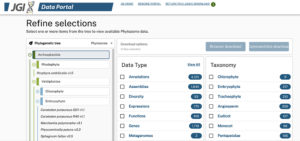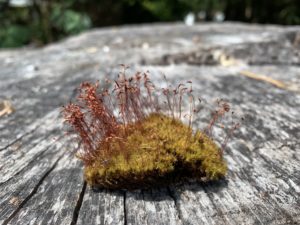 The human-centered, agile collaboration between the JGI and the information technology company Truss has resulted in the JGI Data Portal, a pilot download experience accessible from JGI’s plant portal Phytozome. Although the Data Portal is currently only accessible via Phytozome, the improvements it encompasses are more broadly applicable to the download processes from the other JGI Portals, as well.
The human-centered, agile collaboration between the JGI and the information technology company Truss has resulted in the JGI Data Portal, a pilot download experience accessible from JGI’s plant portal Phytozome. Although the Data Portal is currently only accessible via Phytozome, the improvements it encompasses are more broadly applicable to the download processes from the other JGI Portals, as well.
“For thousands of scientists around the world, the JGI Genome Portal is a critical resource — it provides access to all of JGI’s genomic databases and tools,” noted Kjiersten Fagnan, JGI’s Chief Informatics Officer. JGI’s Portals, including Phytozome, IMG, GOLD, MycoCosm, and PhycoCosm, serve researchers with unique areas of focus and data and computational needs. Over its 23-year history, JGI has produced more than 13 petabytes of data, accessible through the Genome Portal.
“The task of making data more findable and easier to download is a complex one, so our joint team started small, in the tradition of agile design and development,” said Linda Setchell, a Truss product manager who is part of the joint JGI/Truss team. Based on Google Analytics data, the team noticed that a large percentage of Phytozome users who were seeking to download all the data associated with the latest version of the plant portal, weren’t able to complete this task. Improving the download process for this group of users offered the promise of an immediate benefit.

Phytozome is JGI’s plant comparative genomics portal, a hub for accessing, visualizing and analyzing both JGI-sequenced plant genomes such as fire moss (Ceratodon purpureus, shown here and featured on this episode of the JGI Genome Insider podcast) and selected genomes and datasets that have been sequenced elsewhere. (Sarah Carey)
The Data Portal — an updated alternative to the Genome Portal — seeks to more broadly represent JGI’s data. It includes several user-validated features and updated functionality, such as:
- The ability to select data by type or taxonomic group
- The ability to see, at a glance, the number of files available for various data types or taxa
- An at-a-glance view of how much data you’ve selected for download, as well as whether the files you’ve selected are cached (quick download) or uncached (archived)
- The ability to send yourself a calendar reminder to download restored files
- Copy-and-paste curl commands for faster API downloads
“Currently, our team is wrapping up work on the Phytozome download experience and beginning work on the download experience from MycoCosm and PhycoCosm, with the intent of eventually transitioning to work on IMG and GOLD,” said Steve Wilson, head of the JGI’s Systems Engineering Group. “Our team’s ultimate goal is to allow scientists to search for specific types of data across organisms, enabling them to conduct more complex types of research without requiring them to build their own tools to do so.”
The JGI/Truss team has talked to dozens of researchers to determine what they need and expect from JGI tools. “We’re currently recruiting Phytozome, MycoCosm, and PhycoCosm users for sessions, but we’re hoping to talk to users of the other JGI Portals soon,” added Kate Saul, a content strategist and UX researcher on the JGI/Truss team. “Regardless of which tools you use, we encourage you to reach out and share your thoughts — they’ll help us build a solid knowledge base that may inform future updates to one (or more) of the JGI Portals.”
Consider volunteering to participate in a user research session by contacting the JGI User Experience Group — once you complete a short survey, a Group member will contact you regarding UX research opportunities.